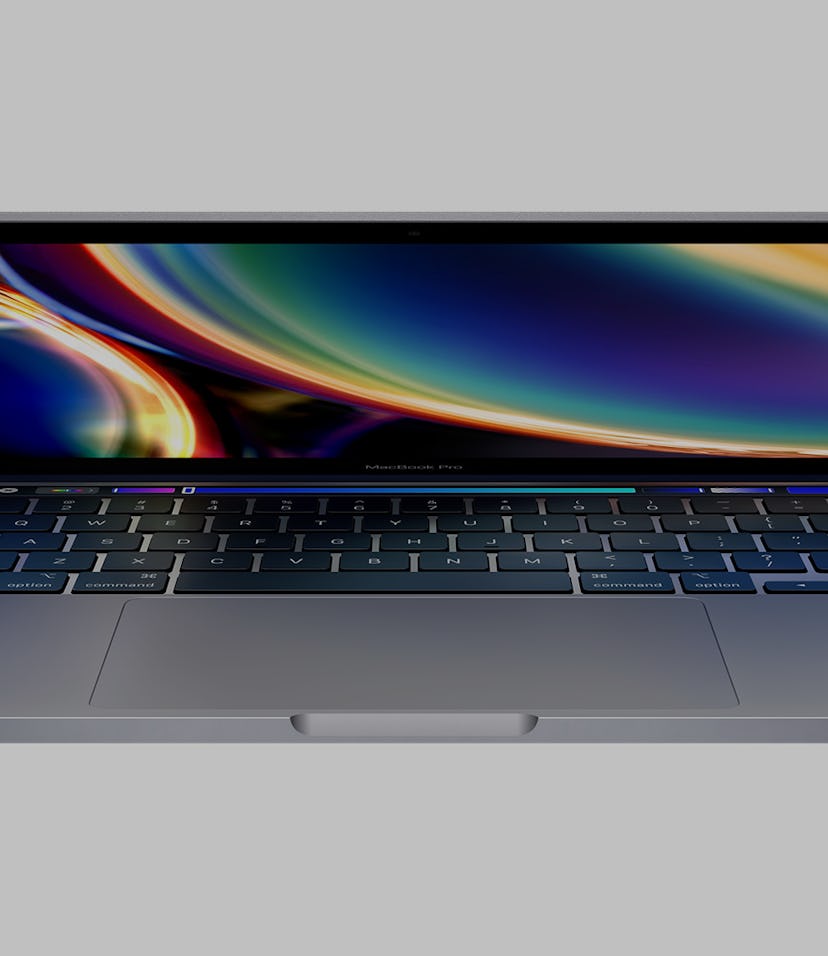Tech
Apple drops 13-inch MacBook Pro with monstrous 32GB of RAM, non-crap keyboard
The era of bad butterfly keyboards and insufficient RAM in Apple's smallest MacBook Pro is finally over.

Happy Monday! I hope you have your credit card ready because Apple has just refreshed its 13-inch MacBook Pros with new scissor-style keyboards aka The Good Keyboards that debuted on the 16-inch MacBook Pro last fall, 10th-generation Intel processor configurations, improved graphics performance, and up to 32GB of RAM. The new laptops are available to order immediately starting at $1,299.
The new 13-inch MacBook Pros are notable for one major reason: after five years of ignoring the flaws of its ill-fated butterfly keyboards, all of Apple's MacBooks now have good keyboards again. The kind that has enough key travel, won't break if dust gets stuck underneath, and sport inverted-T arrow keys.
Monster RAM configurations — The other notable thing about the new 13-inch MacBook Pro is that it can be configured with up to 32GB of RAM of fast LPDDR4X RAM. Previously, Apple reserved 32GB for the 15- and 16-inch MacBook Pros. Not anymore!
Back in 2016, Apple senior vice president of marketing Phil Schiller told one disgruntled customer who really wanted 32GB of RAM in a MacBook Pro this: "To put more than 16GB of fast RAM into a notebook design at this time would require a memory system that consumes much more power and wouldn’t be efficient enough for a notebook." Looks like the time has finally come and it only took four years.
Faster performance — At the bottom of the spectrum, the $1,299 MacBook Pro is stuck with 8th-generation Intel processors starting with a quad-core 1.4GHz Intel Core i5 chip with Turbo Boost up to 3.9GHz and Intel Iris Plus Graphics 645. This is the model that comes with 8GB of 2133MHz LPDDR3 RAM, 256GB of SSD. Doubling the storage to 512GB of SSD pushes the total price up to $1,499. These two low-end MacBook Pros only have two Thunderbolt 3 ports.
The two high-end 13-inch MacBook Pros with four Thunderbolt 3 ports come with new 10th-generation Intel chips. $1,799 gets you a 2.0GHz quad-core Core i5 processor with Turbo Boost up to 3.8GHz, Intel Iris Plus Graphics, 16GB of LPDDR4X RAM, and 512GB of SSD. Doubling the storage to 1TB with the same specs bumps the total cost to $1,999.
A faster clock speed and more RAM will cost extra: $200 for a 2.3GHz quad-core Core i7 chip with Turbo Boost up to 4.1GHz and $400 extra for the 32GB of RAM option. Add up to 4TB of storage and a 13-inch Macbook Pro can now be maxed out for $3,599.
How does that translate to real-life performance?
Customers who are upgrading from a 13-inch MacBook Pro with a dual-core processor will see up to 2.8 times faster performance. The integrated Intel Iris Plus Graphics deliver up to 80 percent faster performance over the previous generation 13-inch MacBook Pro for 4K video editing, faster rendering, and smoother gameplay. The new graphics also enable users to connect to Pro Display XDR at full 6K resolution.
Wait... what's this low-res webcam? — It's 2020 and the MacBook Pro still has a 720p webcam. 720p. IF there was any better time to put a great webcam in a Macbook Pro, it would be now.
Iron-clad security — Eagle-eyed readers will notice that the laptops still have a Touch Bar, but the Touch ID fingerprint reader/power button and escape key are now separate from just like on the 16-inch MacBook Pro. And just like its larger sibling, the new MacBook Pro includes a T2 Security Chip that encrypts and scans for data tampering during bootup.
Where's the 14-inch MacBook Pro? — Today's refresh is obviously not the rumored 14-inch MacBook Pro we've been hearing about for months. It's still using the same 13.3-inch Retina display with P3 wide color gamut support and True Tone.
Apple analyst Ming-Chi Kuo said in March the 14-inch MacBook Pro is scheduled for later this year and will be one of Apple's first laptops to have mini-LED technology, a new type of backlighting system that allows displays to be brighter, more power-efficient, and have better contrast and color accuracy; it's said to narrow the gap with OLED displays. Mini-LED tech has been making its way into TVs and MSI was the first to make a laptop with it.
Besides mini-LED, what else is there to look forward to? God, bring back the SD card slot Apple. Please. Bring. It. Back.